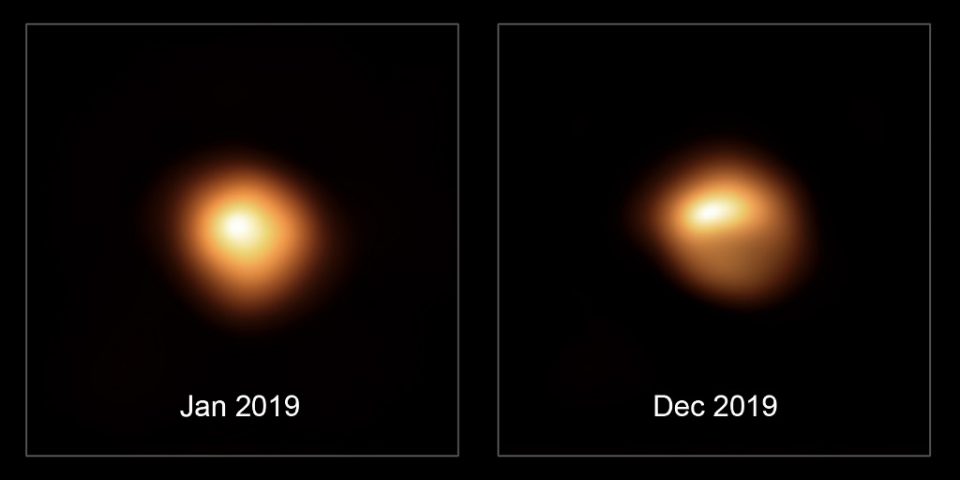
PARIS, France (AFP) — Astronomers have managed to take pictures of Betelgeuse showing that the star, one of the brightest in the Milky Way, has been losing luminosity over recent months, the European Southern Observatory (ESO) said on Friday.
The mysterious dimming of one of the most visible stars in the Orion constellation has astronomers scratching their heads, with some saying Betelgeuse could be about to explode while others point to passing conditions.
“The stunning new images of the star’s surface show not only the fading red supergiant but also how its apparent shape is changing,” the ESO said after astronomers used the observatory’s very large telescope (VLT) to find out more.
A team led by Miguel Montarges, an astronomer at KU Leuven university in Belgium, has been observing the star with ESO’s VLT since December, aiming to understand why it’s becoming fainter.
Betelgeuse began dimming towards the end of last year and is now at about 36 percent of its normal brightness, “a change noticeable even to the naked eye”, ESO said.
Experts investigating the dimming they say is “unprecedented” still do not believe that Betelgeuse is about to explode, as some astronomy enthusiasts have been speculating.
“Betelgeuse will one day go supernova, but astronomers don’t think this is happening now,” ESO said.
Instead, researchers think that either the surface of the star is cooling because of exceptional stellar activity, or that there was “dust ejection towards us”.
Betelgeuse’s irregular surface is made up of giant convective cells that move, shrink and swell, ESO said.
“The star also pulsates, like a beating heart, periodically changing in brightness,” it said.
© Agence France-Presse







